A week in the shop
Published 20 May 2019
Last week I wrote about how I’d been making progress hand thicknessing a neck blank, but alas that all went a bit Pete Tong this week.
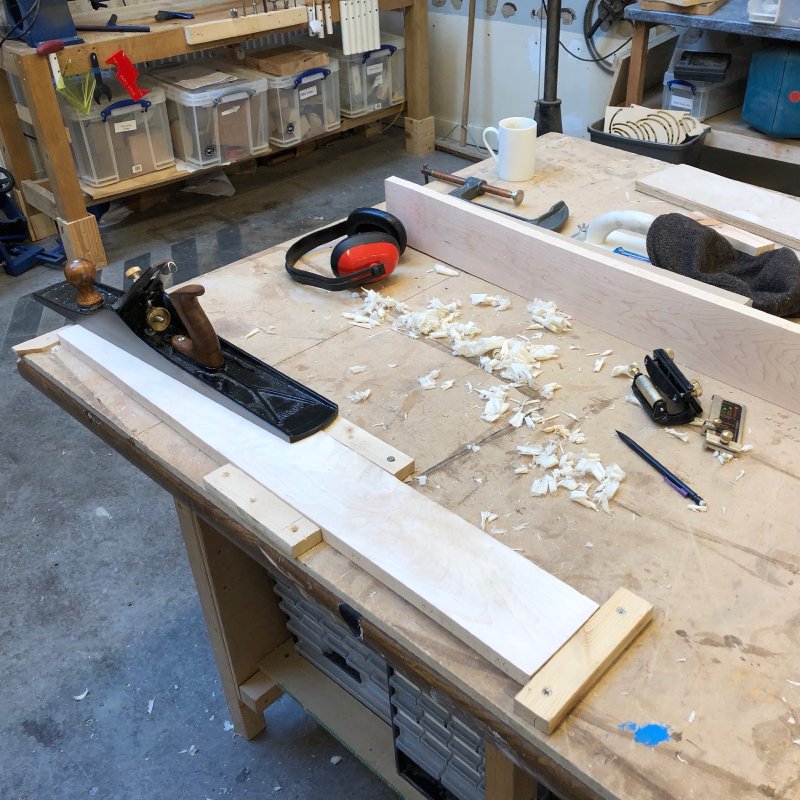
I was struggling with this particular bit of maple due to the multi-directional grain making it prone to tearing, and in the end just as I was getting it down to the right thickness it tore some more, and now it’s unlikely I can make a neck from this bit of wood. Still, a useful lesson on how to work with tough bits of wood, and I need some neck sized jigs to let me line up necks when shaping them on the band saw and spindle sander, so it’s not a total loss as I can use this for one of those.
One of the problems was despite the nice new blade for my plane, the sharpening stones at Makespace were worn almost smooth, so I was struggling on my new tougher steel blade re-honed. Graeme stepped in and ordered Makespace both some new blades for the No 4 and No 5 planes we refurbished the other week, and got us a new diamond 600 grit sharpening stone, so we should be better equipped next time.
I’ve ordered some replacement bits of neck maple from the usual place, so hopefully they’ll turn up shortly and I can try again.
I did take another crack at making the neck template again for the new neck I want to make for The Blues Deluxe t-style, a guitar I made a while back. Last week the laser cutter hadn’t been playing ball power wise as I tried to cut 5mm clear acrylic, but this week it was in a better mood and I managed to get a couple of iterations in as I tried to adjust the template to make the neck fit snug with the pocket in this body (which I didn’t do the design for, so I can’t just make it magically fit).
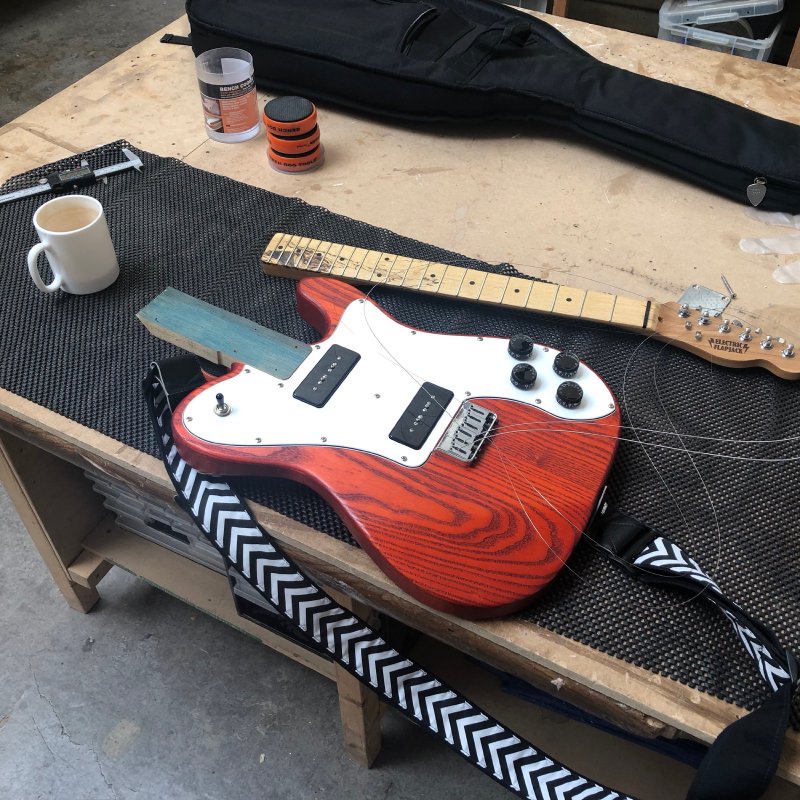
The main thing you need to be careful with when laser cutting templates is the kerf: that is the material that is vaporised by the laser, making the thing you’re left with a couple of tenths of a millimetre smaller than you expected. It’s not just the size of the kerf that you have to worry about though, it’s also the angle: there is more material vaporised at the top of the cut than at the bottom, so you have a sloped edge. If you then take a router bit with a bearing on it to follow this template, the amount you cut away will depend where that bearing rests upon the slope.
Still, I’ve got something that fits well, and indeed fits better than the current neck on that guitar, so once the new maple turns up I can try moving that forward again.
I still need to make a pick guard for the Recovery Offset i’ve been building. If truth be told, I’ve been putting this off, as I’ve had so many things go wrong on the CNC Router in the last few months, I think I have a bit of a mental block on using it now - I just expect it to do me wrong and ruin the nice acrylic I have. But I really want to get this guitar finished before Liverpool Makefest, and all that’s really blocking it is this pick guard.
So, to try and find a way forward, I got myself trained on the smaller Roland Desktop Mill we have at Makespace:

Although clearly no good for making guitar bodies or neck, the bed is big enough for me to make a pick guard. My tasks this week include doing some test cuts on acrylic to check how well it works, and see how I can work around the fact you can’t drill with this, so you need to bore with smaller bits.
At the start of the week Laura and I went to see Samantha Fish, who was playing in Cambridge. It definitely gave me a new guitar hero: she can really play, and got some amazing sounds out of her rig, which included a Gibson SG in standard tuning, a PRS in open tuning for slide, and a cigar box guitar that she made sound just as good as the two “proper” guitars she was playing. You can see an example of her playing the cigar box here.
Given my string of setbacks in guitar building of late, I feel the need for some cheap wins to try and get a sense of having finished something, so I took this gig as inspiration to knock up a cigar box guitar for fun. My friend Amir has donated one of his prized collection of cigar boxes (one he actually got in Havana!) to the project, and given I was ordering some new neck blanks I’ve ordered some wood to make the neck for this (a nice bit of black limba).
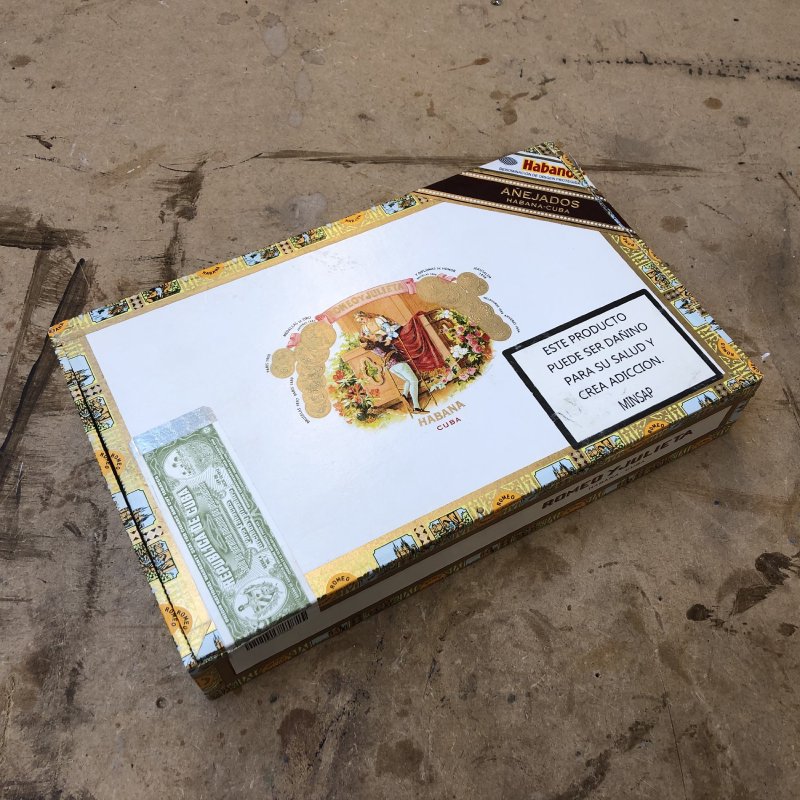
This box has a wooden base but cardboard sides, so wouldn’t be ideal if I was intending to make an acoustic cigar box guitar, but I plan to electrify it, so all should be good. Being the engineer I am, I worked out the rough design in Fusion 360, even though I plan to make this entirely by hand, something that my friend Jim has teased me about, given the spirit of a cigar box guitar is just to make it rough and ready out of what is to hand. But I’m a nerd at the end of the day, and this is how I think even if I’m just roughing out ideas :)
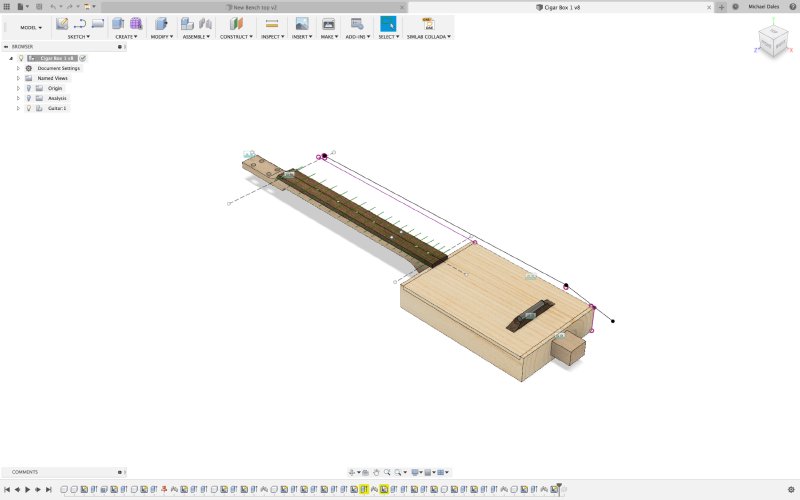
Having got a rough idea of how it’s going to sit together I just need the wood to turn up!
Speaking of Jim, he’s started making progress on the new workbench for the Makespace workshop, something we desperately need. As we’ve improved the state of the workshop over the last half year, we’re seeing a corresponding increase in usage, which is good, but we keep running out of bench space. So it’s great to see the new bench start to move forward, which’ll almost double the available space.
Jim wanted to have a nice pattern of bench dog holes in one half of the workbench, so I helped out by knocking up a quick design in Fusion 360, and then using the CNC Router to make all the holes.
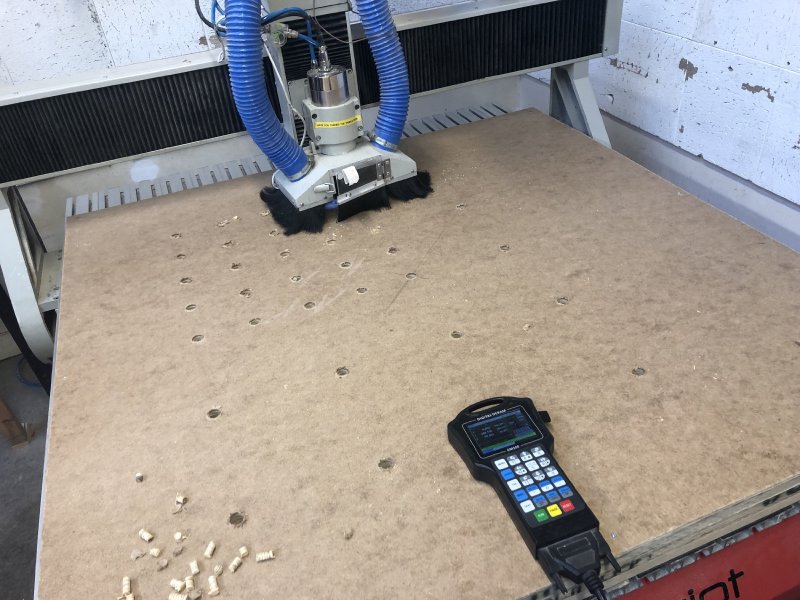
It was fun cutting something that was the size of the CNC Router bed - perhaps Adrian is right and we do need a bigger CNC Router! The depth of the bench top was just at the limit of what I could cut the with bits I had to hand, down to the last millimetre, but we managed it, and it’s all good to go.
One thing we spotted when making the bench dog holes was that the coolant to the spindle wasn’t flowing properly, with the flow occasionally coming to a standstill. We managed to get it going a bit by running the pump backwards briefly which dislodged some build up in the pipes somewhere, but the flow still wasn’t great. Thus Adrian and I got medieval on it at the weekend.
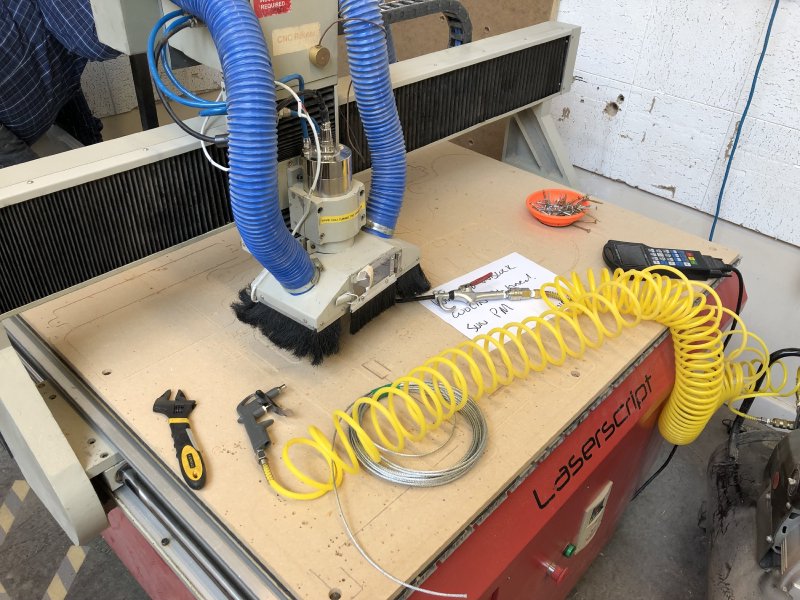
We took some compressed air to each section and gave it a good clear out, and now it’s running better. However, we still don’t quite know why it blocked up, as the water system has pool cleaner in it, and the motor shouldn’t get hot enough to cause limescale to form. It’s always a bit unsatisfying when you fix something but you don’t know why you had to fix it.